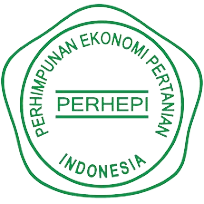Mapping Rice Production in Lamongan Regency Using Geographic Information Systems (GIS)
DOI:
10.25047/jmaa.v3i1.68Downloads
Abstract
Lamongan Regency is known as one of the largest rice producers in East Java with a contribution of 8.76 percent to total rice production in East Java. The use of computer-based technology really supports planning, one of which is mapping. The aim of this research is to map rice production in Lamongan Regency using Geographic Information System (GIS) technology. This research uses spatial data in the form of administrative maps of Lamongan Regency in 2017, sea depth maps in 2018 and rice production data in Lamongan Regency in 2017 and 2019. The results of the research show that rice production in Lamongan Regency is not much different in 2017 and 2019. There are fluctuations in rice production in each sub-district. The largest rice production is in Sugio District while the smallest production is in Paciran District. Factors that influence rice production include the area of rice fields, land characteristics, and Lamongan Regency Government policies. Based on spatial analysis with maps, the largest rice production is in Sugio District because it is lowland with a high level of fertility and has the largest area of rice fields. Meanwhile, the lowest rice production is in the Brondong, Paciran, Solokuro, Kalitengah and Deket sub-districts because the limestone mountains are rocky and areas prone to flooding and have limited rice fields. Apart from that, Paciran, Solokuro and Brondong sub-districts are more prioritized in developing the industrial, tourism and trade sectors
Keywords:
Beras Kabupaten Lamongan SIG luas sawah karakteristik lahan KebijakanReferences
R. B. Manggala and A. B. R, “Faktor-Faktor Yang Mempengaruhi Produksi Padi Di Desa Sumengko Kecamatan Sukomoro Kabupaten Nganjuk,” Jurnal Ilmu Ekonomi, vol. 2, no. 3, pp. 441–452, 2018.
N. Bandumula, “Rice Production in Asia: Key to Global Food Security,” Proceedings of the National Academy of Sciences, India Section B: Biological Sciences, vol. 88, no. 4, pp. 1323–1328, Dec. 2018, doi: 10.1007/s40011-017-0867-7.
S. Sen, R. Chakraborty, and P. Kalita, “Rice - not just a staple food: A comprehensive review on its phytochemicals and therapeutic potential,” Trends Food Sci Technol, vol. 97, pp. 265–285, Mar. 2020, doi: 10.1016/j.tifs.2020.01.022.
D. M. Azzahra, A. Amir, and S. Hodijah, “Faktor-Faktor Yang Mempengaruhi Impor Beras di Indonesia,” Journal Perdagangan Industri dan Moneter, vol. 9, no. 3, pp. 181–192, 2021.
Badan Pusat Statistik, “Produksi Beras Indonesia (2018-2021),” 2022. https://www.bps.go.id/indicator/53/1498/1/luas-panen-produksi-dan-produktivitas-padi-menurut-provinsi.html (accessed Jun. 30, 2022).
D. N. I. Sari, F. Sobatnu, Y. D. Batara, and P. Studi DIII Teknik Geodesi, “Analisis Geospasial Produksi Beras Terhadap Kebutuhan Masyarakat Menggunakan Sistem Informasi Geografis Di Kabupaten Banjar,” Positif : Jurnal Sistem dan Teknologi Informasi, vol. 6, no. 1, pp. 11–17, 2020.
BPS Provinsi Jawa Timur, “Produksi Padi dan Beras Menurut Kabupaten/Kota di Provinsi Jawa Timur 2019 dan 2020,” 2021. https://jatim.bps.go.id/statictable/2021/09/06/2238/produksi-padi-dan-beras-menurut-kabupaten-kota-di-provinsi-jawa-timur-2019-dan-2020.html (accessed Jun. 30, 2022).
Sumardin and A. SN, “Penerapan Sistem Informasi Geografis dalam Pemetaan Produksi Pertanian di Kabupaten Bone,” Jurnal Inspiraton, vol. 6, no. 2, pp. 173–178, 2016.
Y. Y. Prasetya, A. Faisol, and N. Vendyansah, “Sistem Informasi Geografis Hasil Produksi Padi Di Kabupaten Malang Menggunakan Metode K-Means Clustering,” JATI (Jurnal Mahasiswa Teknik Informatika), vol. 5, no. 2, 2021, doi: 10.36040/jati.v5i2.3788.
N. Zalmita, Y. Alvira, and M. H. Furqan, “Analisis Perubahan Penggunaan Lahan Menggunakan Sistem Informasi Geografis (SIG) Di Gampong Alue Naga Kecamatan Syiah Kuala Tahun 2004-2019,” Jurnal Geografi, vol. 9, no. 1, pp. 1–9, May 2020, doi: 10.24036/geografi/vol9-iss1/920.
Badan Pusat Statistik, “Luas Lahan Sawah Menurut Kecamatan dan Jenis Pengairan di Kabupaten Lamongan (ha), 2017,” 2018. https://lamongankab.bps.go.id/statictable/2018/05/18/5241/luas-lahan-sawah-menurut-kecamatan-dan-jenis-pengairan-di-kabupaten-lamongan-ha-2017.html
M. A. Rahmawaty, “Analisis Potensi Lahan Pertanian Pangan Berkelanjutan Di Kabupaten Lamongan Tahun 2018,” Geomedia, vol. 17, no. 2, pp. 135–144, 2019.
BBPPBATU, “Panen Melimpah di BPP Sugio Model Kostratani,” 2020. https://bbppbatu.bppsdmp.pertanian.go.id/2020/07/24/panen-melimpah-di-bpp-sugio-model-kostratani/
A. A. Zaini, “Potret kehidupan masyarakat nelayan tradisional di desa kranji kecamatan paciran kabupaten lamongan,” Jurnal Ummul Qura, vol. XII, no. 2, pp. 1–17, 2018.
N. Ekaputri, “Harvested Area Influence to Production of Food and Estate Crops in East Kalimantan,” Pengaruh Luas Panen Terhadap Produksi Tanaman Pangan Dan Perkebunan Di Kalimantan Timur, vol. 5, no. 2, pp. 36–43, 2008.
I. A. S. Huda, M. H. Suwargany, and D. S. Anjarika, “Analisis Daya Dukung Dan Kebutuhan Lahan Pertanian Di Kabupaten Lamongan Tahun 2035,” Prosiding Seminar Nasional Geografi UMS 2017, pp. 396–405, 2017, doi: 10.33059/jsg.v4i1.2505.
License
Copyright (c) 2023 Ahmad Haris Hasanuddin Slamet, Sekar Ayu Wulandari, Rahmat Dhandy, Septine Brillyantina, Rafly Rizqullah

This work is licensed under a Creative Commons Attribution 4.0 International License.
You are free to:
- Share — copy and redistribute the material in any medium or format for any purpose, even commercially.
- Adapt — remix, transform, and build upon the material for any purpose, even commercially.
The licensor cannot revoke these freedoms as long as you follow the license terms.
Under the following terms:
- Attribution — You must give appropriate credit, provide a link to the license, and indicate if changes were made. You may do so in any reasonable manner, but not in any way that suggests the licensor endorses you or your use.
- No additional restrictions — You may not apply legal terms or technological measures that legally restrict others from doing anything the license permits.
Notices:
You do not have to comply with the license for elements of the material in the public domain or where your use is permitted by an applicable exception or limitation.
No warranties are given. The license may not give you all of the permissions necessary for your intended use. For example, other rights such as publicity, privacy, or moral rights may limit how you use the material.






